Understanding the Importance of Cover Letters
In today’s competitive job market, a well-crafted cover letter is your first opportunity to make a lasting impression on a potential employer. It’s more than just a formality; it’s a crucial tool that can significantly influence whether your application gets noticed. Understanding the importance of a cover letter is the first step in crafting one that helps you stand out. It is your chance to express your personality, showcase your communication skills, and explain why you are the perfect fit for the role. A compelling cover letter bridges the gap between your resume, which lists your qualifications, and the hiring manager’s understanding of you as a person and a professional. It offers the opportunity to tell your story, elaborate on specific achievements, and demonstrate your genuine interest in the company and the position. Without a strong cover letter, your application might get lost in the pile.
Why Cover Letters Matter
Cover letters provide context to your resume. They give you the chance to tell the story behind your qualifications, explain career transitions, and highlight the skills and experiences that make you unique. The cover letter enables you to personalize your application. A generic resume might not resonate with every employer, but a tailored cover letter that is addressing the specific needs and values of the company will. It allows you to demonstrate your knowledge of the company, show your enthusiasm for the role, and make a strong case for why you are the best candidate. Moreover, in a world where initial impressions are crucial, the cover letter serves as your introduction. A well-written cover letter can make you memorable, even if your resume is similar to others. It can highlight your accomplishments, showcase your communication skills, and convey your personality.
How Cover Letters Help You
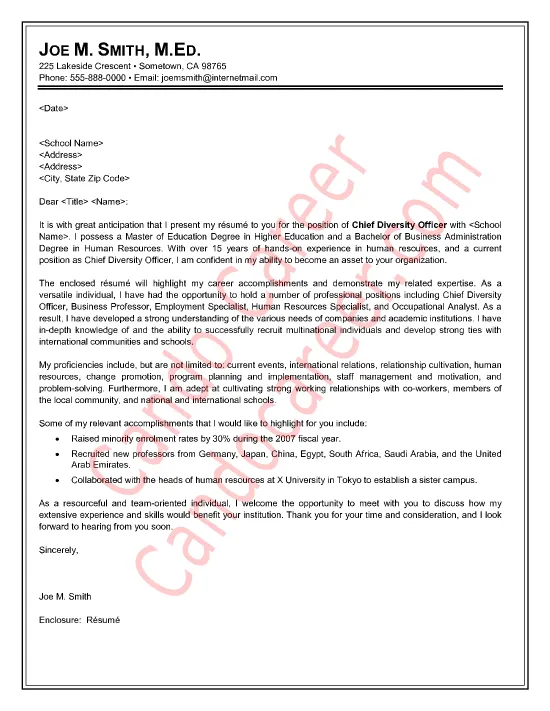
Cover letters are instrumental in communicating your value proposition to the hiring manager. By explicitly connecting your skills, experiences, and accomplishments with the job requirements, you make it easy for the employer to see how you can contribute to their team. They provide an opportunity to address any gaps or concerns that might arise from your resume, such as career changes or periods of unemployment. By explaining these circumstances in a professional and positive manner, you can reduce any potential doubts and reassure the employer of your abilities. Your cover letter also serves as a way to demonstrate your research and understanding of the company. Mentioning specific projects, values, or goals of the company shows that you have taken the time to learn about them and are genuinely interested in being a part of their team. This effort can set you apart from candidates who are sending generic applications.
Key Components of a Standout Cover Letter
Crafting a standout cover letter involves several key components, each playing a vital role in capturing the reader’s attention and persuading them of your suitability for the role. These elements, when combined, help you create a compelling and persuasive introduction to your qualifications and personal brand. Begin with a professional header including your contact information, followed by a clear and concise opening that immediately grabs the hiring manager’s attention. The body of the letter should highlight your relevant skills and experiences, providing specific examples of how you have achieved results in the past. It’s essential to tailor your cover letter to the specific job and company, using keywords from the job description and demonstrating your understanding of their needs. Finally, a strong closing paragraph should reiterate your interest, express gratitude for the opportunity, and include a call to action, such as inviting them to contact you for an interview.
Your Contact Information
Begin your cover letter with your contact information at the top, including your full name, address, phone number, and professional email address. Ensure your email address is professional and appropriate. Also, include the date and the recipient’s information (name, title, company, and address, if available). This information provides an easy way for the hiring manager to reach you. Accuracy is crucial here; double-check all details for correctness. Presenting accurate and easily accessible contact information is essential to establish a professional first impression and facilitate a smooth communication process. Failing to provide proper contact information can lead to your application being disregarded.
The Opening Paragraph
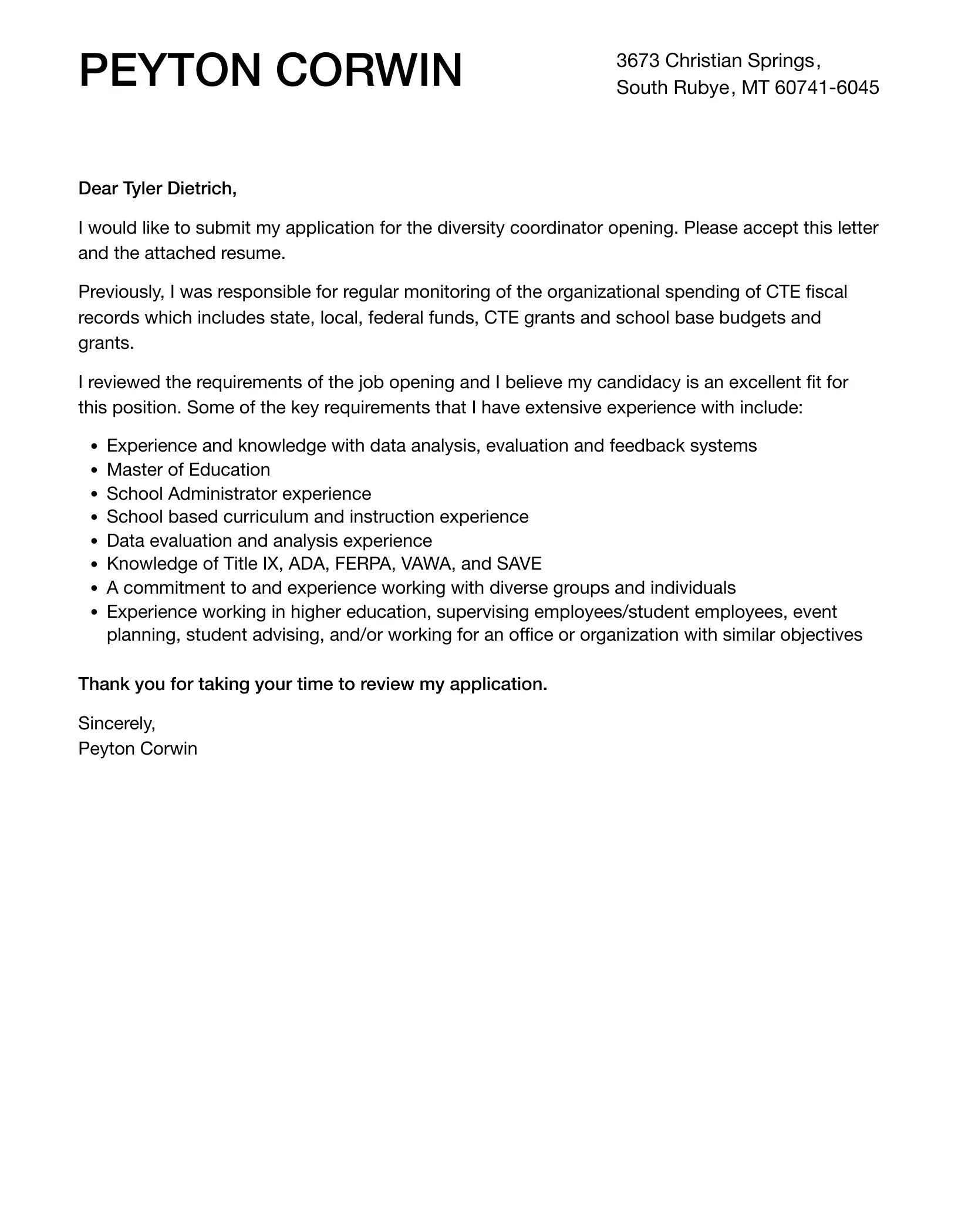
The opening paragraph is your first and perhaps only opportunity to make a strong impression. Start by clearly stating the position you are applying for and where you found the job posting. Next, immediately capture the reader’s attention by explaining why you are interested in the role and the company. Consider including a brief, compelling statement that highlights your key qualifications or a significant achievement relevant to the position. Make sure this opening paragraph is concise, engaging, and tailored to the specific job and company. Avoid generic phrases. Instead, show enthusiasm and demonstrate your understanding of their needs. The goal is to immediately convey your value and encourage the reader to continue reading your cover letter.
Highlighting Relevant Skills and Experience
The body of your cover letter is where you showcase your qualifications. Select the skills and experiences that align with the job requirements. Use the job description as your guide, and highlight the skills and experiences that the employer values most. Don’t just list your responsibilities; provide specific examples of your accomplishments and how they benefited previous employers. Use the STAR method (Situation, Task, Action, Result) to structure your examples and make them more impactful. Quantify your achievements whenever possible, such as by mentioning percentages, numbers, or dollar amounts. Doing this provides concrete evidence of your capabilities. Ensure that your examples are concise, focused, and clearly demonstrate your ability to meet the needs of the employer.
Tailoring Your Cover Letter for Diversity and Inclusion
In today’s professional landscape, demonstrating your commitment to diversity and inclusion is crucial. Tailoring your cover letter to reflect your understanding of and commitment to these values can greatly enhance your application. Focus on showing your ability to work effectively with diverse populations and contribute to inclusive environments. Tailor your cover letter to the specific company and role. Research the company’s diversity initiatives and values, and reflect this in your application. Your application should also include your ability to be respectful of all, by showing your experience of working with diverse individuals.
Showcasing Cultural Sensitivity
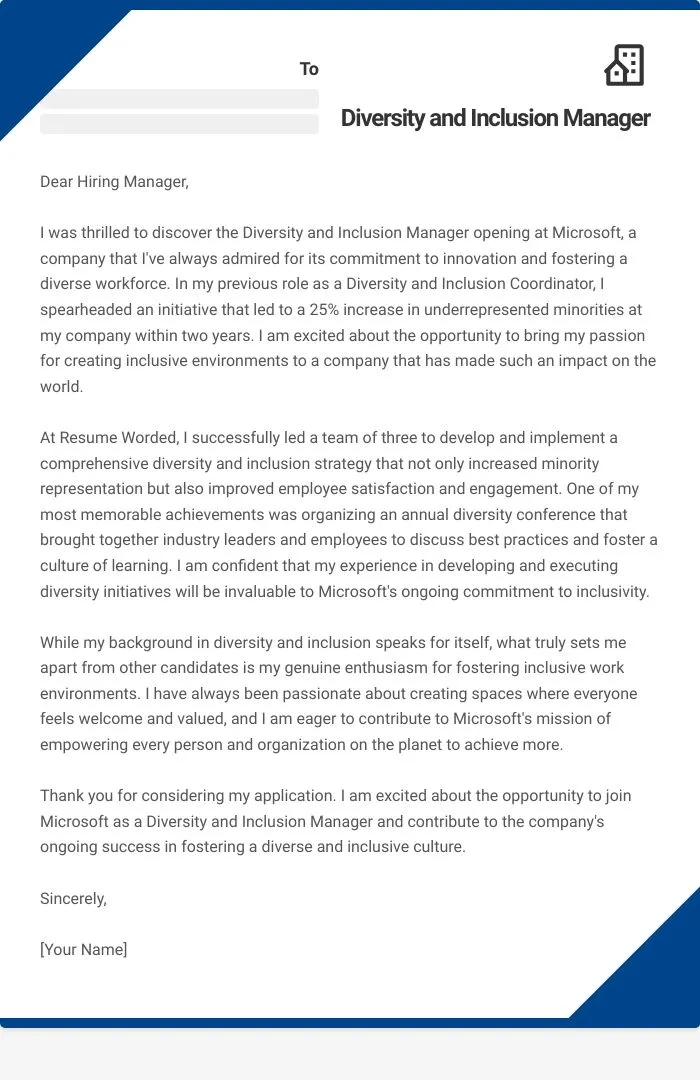
Cultural sensitivity is a valuable asset in the workplace. Show your awareness by mentioning any cross-cultural experiences you have had, such as working or studying abroad, or collaborating with people from diverse backgrounds. Highlight your understanding of different cultural norms and communication styles. Be prepared to address how you have successfully navigated cross-cultural interactions and resolved any potential misunderstandings. If you are fluent in multiple languages, mention this, as it demonstrates your ability to communicate with a wider audience. By showcasing your ability to appreciate and adapt to different cultures, you show you are able to foster respect for all.
Addressing Diversity-Related Experiences
Include any volunteer work, community involvement, or leadership roles that demonstrate your commitment to diversity and inclusion. Discuss experiences where you have supported or advocated for underrepresented groups. If you have been involved in diversity and inclusion initiatives at previous jobs or in your community, highlight these achievements. Explain the positive impact you had and what you learned from those experiences. The experiences will show you’re willing to work towards positive and beneficial outcomes. These can be great additions to your cover letter.
Emphasizing Inclusive Language
Use inclusive language throughout your cover letter to demonstrate your respect for all individuals. Avoid using gendered pronouns or making assumptions about someone’s gender identity or sexual orientation. Make sure your language is free of stereotypes and biases. Focus on using neutral language that respects all individuals and groups. This includes avoiding jargon or slang that could be exclusionary. Use terms that are respectful and appropriate for all groups. This will show that you are considerate of others.
Actionable Tips for Cover Letter Success
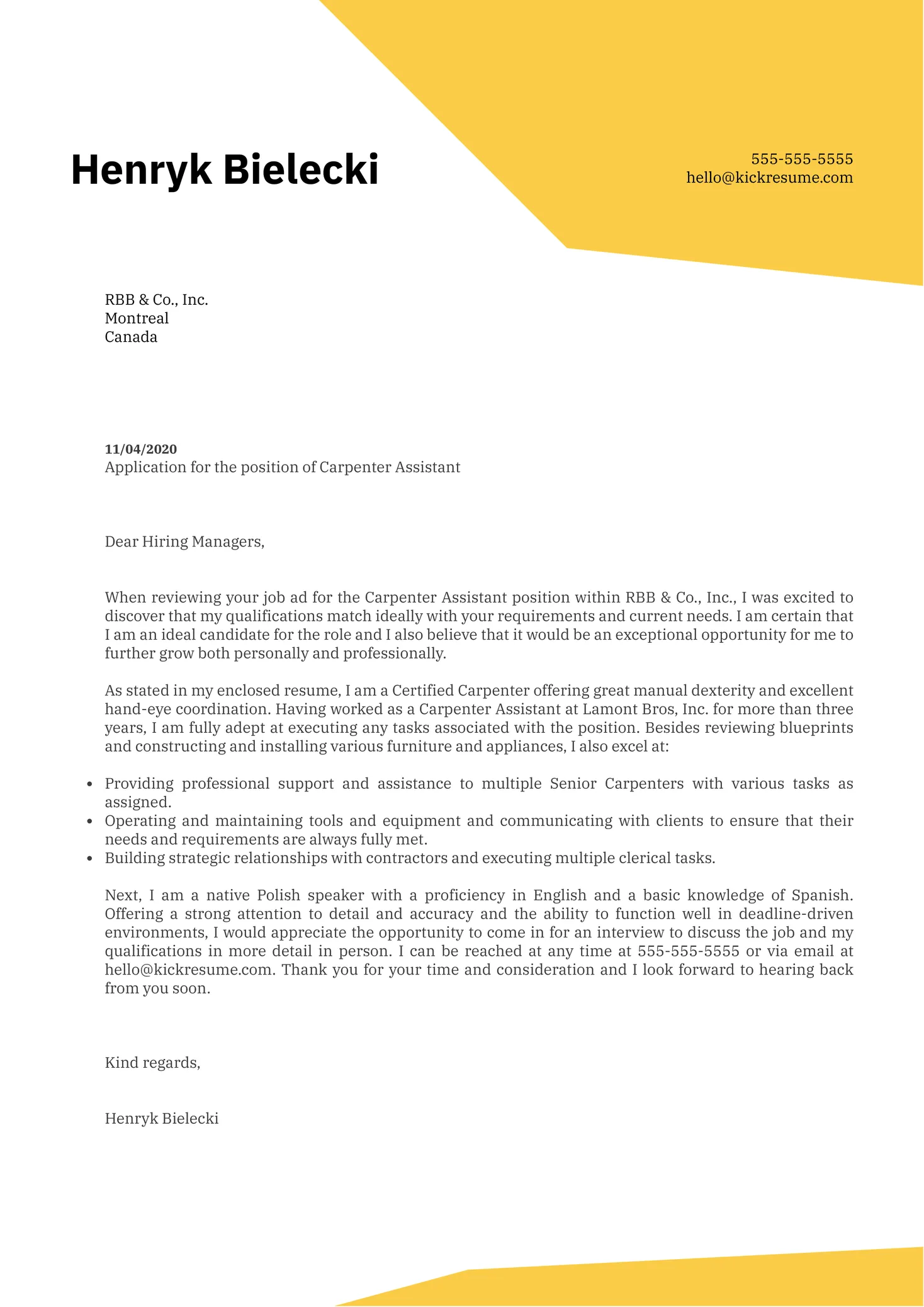
Crafting a cover letter that stands out from the competition requires a strategic approach. Implementing specific tips will help improve your chances of getting noticed. Researching the company culture, proofreading meticulously, and formatting for impact can significantly enhance your cover letter’s effectiveness. These tips not only improve your cover letter but also demonstrate your attention to detail and professionalism.
Research the Company Culture
Before you start writing, research the company’s values, mission, and culture. Visit their website, read their social media pages, and search for any recent news or press releases. Tailor your cover letter to reflect your understanding of the company’s goals and their commitment to diversity and inclusion. Use keywords and phrases from their website and job descriptions to demonstrate that you understand their needs and are a good fit. Mention specific projects or initiatives that align with your skills and experiences. This research shows genuine interest and a proactive approach, which can significantly improve your chances of being noticed.
Proofread and Edit Carefully
Proofreading and editing are crucial steps. Errors in grammar, spelling, and punctuation can undermine your credibility and negatively impact your chances of being selected. Carefully review your cover letter for any mistakes. Read it aloud to check for awkward phrasing or unclear sentences. Ask a friend or career advisor to proofread your letter for you. They can provide a fresh perspective and catch any errors you might have missed. Always have a fresh look at your work before you submit it.
Formatting for Impact
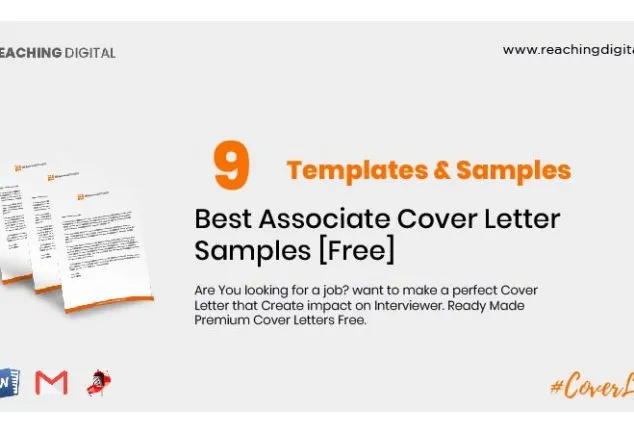
The layout of your cover letter can be as important as the content. Use a professional and easy-to-read font such as Arial or Times New Roman. Use a font size between 10 and 12 points. Use clear and concise formatting, including ample white space. This helps the reader quickly understand your main points. Use bullet points to highlight key skills and accomplishments. Make sure your formatting is consistent throughout the document. A well-formatted cover letter is easy to read and demonstrates professionalism. Always ensure that the formatting matches the resume.
Conclusion
Writing a standout cover letter is an investment that can dramatically improve your chances of landing an interview. By following these tips and tailoring your letter to each job application, you can make a compelling case for why you are the best candidate. Remember to highlight your skills, experiences, and enthusiasm for the role. Demonstrate your understanding of the company’s needs and values. Proofread carefully and ensure that your cover letter is free of errors. With dedication and attention to detail, you can create a cover letter that sets you apart and helps you achieve your career goals.
